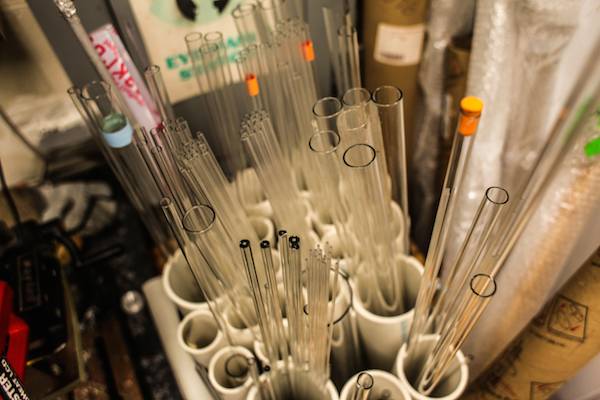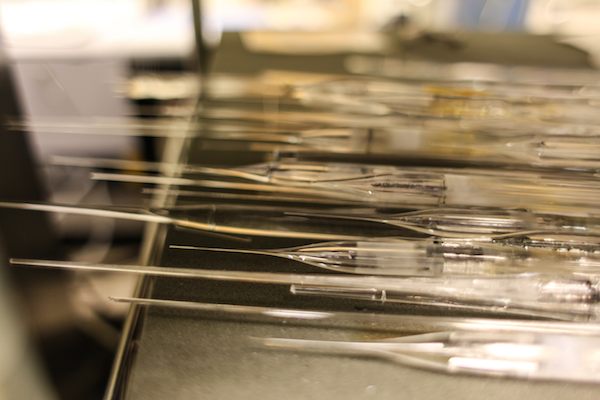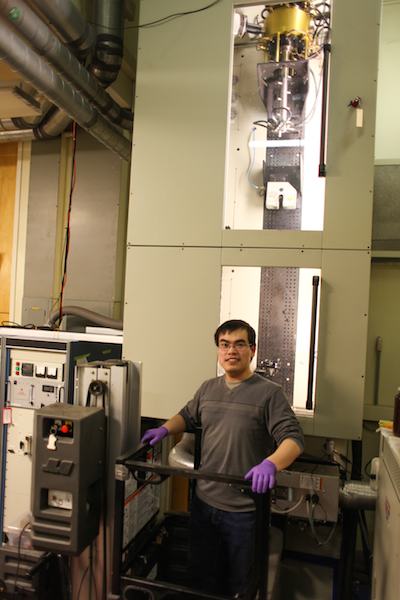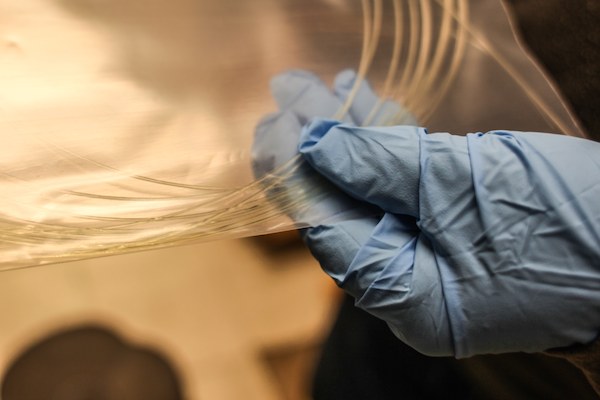
[Image above] Graduate student Chong Hou holds a bag of drawn silicon fibers that are as thin as 100 micrometers in diameter. Credit: Jose-Luis Olivares; MIT
Researchers at MIT have performed another materials magic trick.
With a highly technical wave of a wand, they have, for the first time, fabricated multifunctional, multimaterial fibers that have a completely different composition than their starting materials.
The method of drawing thin fibers from a thick block of starting material, called a preform, is nothing new—it’s how fiber optics are made. But never before has the composition of the fiber differed from that of the preform.
The MIT researchers, in the latest of those whoops-to-eureka moments, have transformed a preform made of abundant and inexpensive materials aluminum and silica into high-quality, pure, crystalline silicon fibers coated with silica.
“It opens new opportunities in fiber materials and fiber devices through value-added processing,” Yoel Fink, professor of materials science and electrical engineering and head of MIT’s Research Laboratory of Electronics, says in an MIT press release.
The researchers were testing ways of incorporating metal wires within fibers. When they tried aluminum, the results seemed amiss. “When I looked at the fiber, instead of a shiny metallic core, I observed a dark substance; I really didn’t know what happened,” says lead author Chong Hou.
Fink adds, “My initial reaction might have been to discard the sample altogether.” Luckily, the researchers spared the weird results from the trash bin and instead examined the material more closely.
Careful analysis revealed that the material was pure crystalline silicon—the stuff of computer chips, solar cells, and other semiconductor devices.
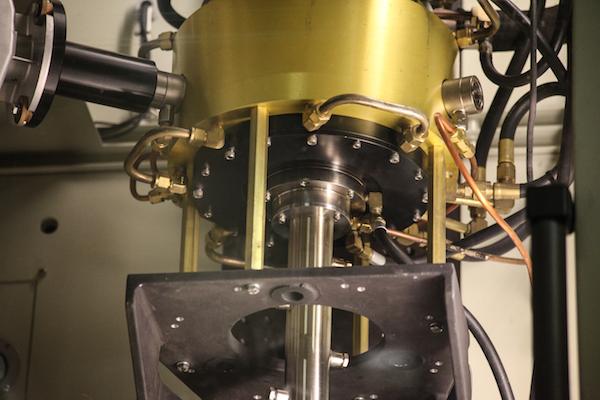
The fiber drawing furnace, which heats tubes to about 2,200 degrees Celsius. Credit: Jose-Luis Olivares; MIT
The release explains, “At the high temperatures used for drawing the fiber, about 2,200 degrees Celsius, the pure aluminum core reacted with the silica, a form of silicon oxide. The reaction left behind pure silicon, concentrated in the core of the fiber, and aluminum oxide, which deposited a very thin layer of aluminum between the core and the silica cladding.”
The resulting silicon-core fibers can be used to fabricate electrical devices inside fibers. “We can use this to get electrical devices, like solar cells or transistors, or any silicon-based semiconductor devices, that could be built inside the fiber,” Hou says in the release.
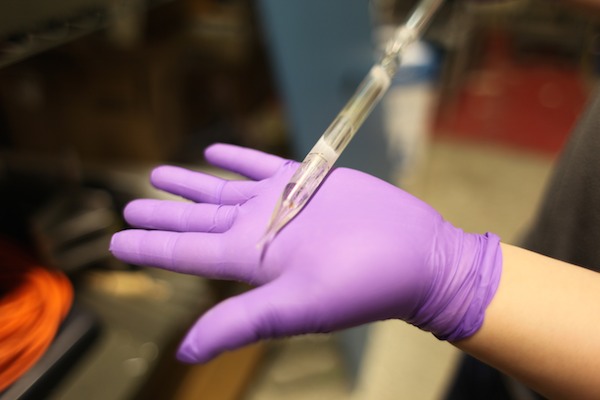
Hou holds a leftover silica preform after it has been used. The tapering tip shows how the preform is stretched to make long strands of fiber while in the furnace. Credit: Jose-Luis Olivares; MIT
Bypassing the need to start with a pure silicon preform means a less expensive method to generate silicon-core fibers. The team says the method can be used to generate materials beyond silicon, too, in addition to fabricating specific structures within fibers.
According to the release, “Fink adds that this is ‘a new way of thinking about fibers, and it could be a way of getting fibers to do a lot more than they ever have.’ As mobile devices continue to grow into an ever-larger segment of the electronics business, for example, this technology could open up new possibilities for electronics—including solar cells and microchips—to be incorporated into fibers and woven into clothing or accessories.”
“Optical fibers are central to modern communications and information technologies, yet the materials and processes employed in their realization have changed little in 40 years,” John Ballato, ACerS member and director of the Center for Optical Materials Science and Engineering Technologies at Clemson University, who was not involved in the research, says in the release. “Of particular importance here is that the starting and ending core composition are entirely different. Previous work focused on chemical reactions and interactions between core and clad phases, but never such a wholesale materials transformation.”
[More on Ballato’s thoughts about optical fibers here.]
Henry Du, ACerS member and professor of chemical engineering and materials science at Stevens Institute of Technology, who also was not associated with the research, adds in the release, “This work is simply beautiful. This new strategy will enable the fabrication of new classes of functional fibers that would otherwise be difficult, if not impossible, using the traditional approach.”
The paper, published in Nature Communications, is “Crystalline silicon core fibres from aluminium core preforms” (DOI: 10.1038/ncomms7248).

